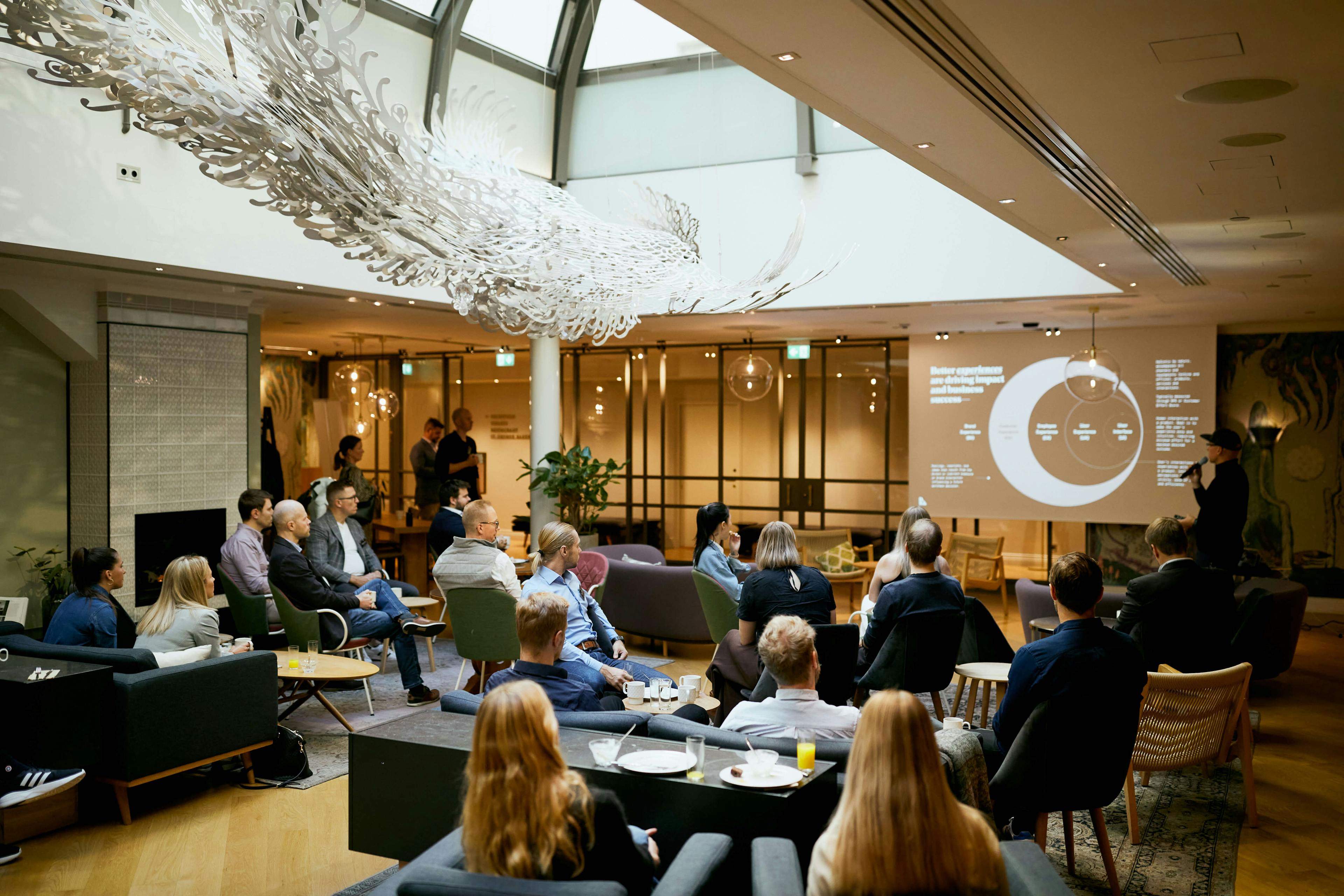Breaking the mold of monolithic e-commerce
Dawn of digital commerce
Having worked on and off with e-commerce for 20 years has lent some perspective. Goes without saying, e-commerce was still in its infancy a decade or two ago. Businesses had to rely on monolithic systems or massive amounts of custom software development to power their online business operations. These were costly to build and difficult to run.
One of the first e-commerce projects my company worked on back then was Mascus.com, an online marketplace for used machinery, spares, and accessories worldwide. Tractors, trailers, second hand vehicles, diggers, box trailers, small diggers, excavators, and more. Mascus was an aspiring venture from an industrial company to put its balance sheet to better use and, in part, future-proof its business.
A dedicated team of one designer and nine engineers spent a good 12 months designing and engineering the platform, followed by a successful launch. The platform was designed with a monolithic, early e-commerce engine at its core, but to be honest, the team worked most of the year trying to overcome and build around its shortcomings. But it made its way to the market and is actually still running today – even with some of the same great people still in the team.
The early players
Fast forward some 5–7 years and different vendors started looking into how to better support the needs of businesses heading online. Working to stay relevant, the overlap grew between content management, digital experience management, e-commerce and more. It was a heyday for vendors like Sitecore, Hybris (nowadays SAP Commerce Cloud) and Episerver (Optimizely).
Salesforce was the first to pioneer and really start a movement that accelerated the large scale transition to SaaS business models. Part of the SaaS movement reflected on the evolution of e-commerce, too, with actors such as Shopify leading the way. To join in on the growth, Salesforce acquired Demandware in 2017, a leader in cloud-based e-commerce, and revamped the platform into Salesforce Commerce Cloud.
Shortly after Shopify was launched, Magento took its first steps as an open-source e-commerce platform. Propelled by general e-commerce growth, in 2018, Magento became a part of Adobe’s enterprise offering, rebranded Adobe Commerce.
All these traditional e-commerce vendors are the usual suspects in the top-right side of the Gartner’s Magic Quadrant. Regardless of their capabilities and target segments, all these platforms are roughly made like this:
Real life experiences have shown that this architecture is having a hard time living up to the expectations of brands and larger companies. There are some major limitations.
Firstly, these traditional platforms are all based on templating systems (call it themes, boilerplates or accelerators) that easily result in platform-lock, vendor-lock, or both. Moreover, ask any developer how easy it is to customize and manage those themes, or work with a programming language they didn’t choose. Or talk to project leads on how successful these projects have been in terms of budget and time to market. Or talk to creatives about how happy they are with the final results and tooling they’ve been provided.
Enter: headless
A major step towards building better e-commerce is to go headless. A headless platform doesn’t provide or restrict you to any specific presentation layer. Headless storefronts allow the experience to be managed in a separate frontend application connecting with monolithic e-commerce backends such as Adobe Commerce, Hybris, or Shopify Plus, the enterprise plan from Shopify.
This approach enables more bespoke, on-brand experiences. Developers can use their favorite languages and tools to be more productive. Creatives have more freedom to design any user experience and customer journey. Both SEO and store accessibility are easier to ensure.
Typical shortcomings with this approach include continued platform and vendor lock, often quite modest content management capabilities, and performance. Yes, with a headless storefront the store can be optimized to a large extent, but overcoming the performance bottlenecks of the backend during e.g. Black Friday remains a costly challenge.
Hello composable
Over 15 years ago, Greg Linden – who worked at Amazon at the time – reported test results that are still relevant today. Through A/B tests, they iterated to delay a page load in increments of 100 milliseconds and found out that even very small delays would result in substantial drops in revenue. A more thorough analysis concluded a 1% loss in net sales at each step.
In e-commerce, being fast matters. Users respond positively to speed. And better customer experience means higher conversions, especially during seasonal spikes.
Composability is essentially Lego bricks for complex systems like e-commerce. Like Legos, composable components can be assembled and configured to construct systems that are flexible, scalable, and adaptable. It allows developers to choose best-of-breed performant, cloud-native components and services, ‘composing’ them into a solution to meet business needs with unparalleled velocity. As most companies are looking to speed up digital development, this paradigm has become popular.
Composable e-commerce allows businesses to create and run their online stores using the services, tools and technologies of their choice, including commerce engine, payments, content management, digital experience, logistics, customer relationship data and more. It increases flexibility, scalability, and adaptation to new use cases and opportunities. Any component in the composition can be replaced later when necessary, future-proofing the stack.
Its founders have broad experience in implementing global commerce for some of the biggest fashion houses in the world, learning a lot about the challenges of building e-commerce the right way. They chose to found Commerce Layer as they had not seen a successful project coming out of the box of any platform or a beautiful UX being packed in any theme.
By focusing strictly on commerce, not content, Commerce Layer allows the realization of the benefits of a composable approach – including flexibility, speed and scalability – through its powerful transactional engine, leaving content to best-of-breed tools such as Contentful or Sanity. With a clean separation of commerce and content, developers can build more scalable websites and creatives can design powerful, on-brand experiences.
When it comes to enabling experience management in the composed world, companies like Uniform are on a mission to empower business users to have control of presentation management, A/B tests and personalization. With Uniform, companies can start bridging the gap between a monolith and composable rapid deployment time and immediate results.
Seeing results, fast
For a good part of the past year, we’ve been helping several clients overcome their challenges with their e-commerce capabilities. Some common frustrations and pain points have included slow time to market, high effort needed to maintain the solution, vendor lock, difficulties in scaling the platform to meet peak campaign loads, limited support for international markets, limited omnichannel capabilities, and overall total cost of ownership.
One of our enterprise clients was looking to drastically improve their B2B e-commerce CX globally. Looking closely at their target segments, it became apparent that our client would benefit from a better, simpler and faster restocking experience whilst also allowing for their customers to discover upcoming collections and explore relevant content for professionals.
A smooth, mobile first experience was set as the goal, and we took on the challenge. Starting the journey towards a composable approach, Contentful was tasked to manage the content and a bespoke experience was designed and engineered, connecting with a monolithic e-commerce engine. Six months later, the app was ready for a global roll-out. And reception was nothing but positive.
Another example is Reima, a well-known kids’ functional clothing brand we’ve had the pleasure of helping out over the past few years. Last year we planned how they would transition from a monolithic e-commerce solution to a composable stack. Working closely together with the client and other key partners, we set out to design a scalable, highly performant solution that would drive growth and allow shaping experiences to the needs of each particular market.
In a matter of a few months, the MVP was ready for the first markets and the very first results were promising. There were immediate, considerably positive effects on store performance across KPIs such as organic traffic, conversion rates, revenue as well as average order value. Equally important, the shopkeepers and creatives were happy with their new flexible set of tooling.
Focus on the experience
Experiences matter. And so does the way those experiences are enabled.
Any strong brand seeking positive business outcomes should make note of the composable approach. It allows brands to create experiences that drive better business outcomes with platforms that are sustainable to develop and run.
As one of our clients put it, “this is the best opportunity in the history of the industry for technology to drive commercially viable transformation”.






